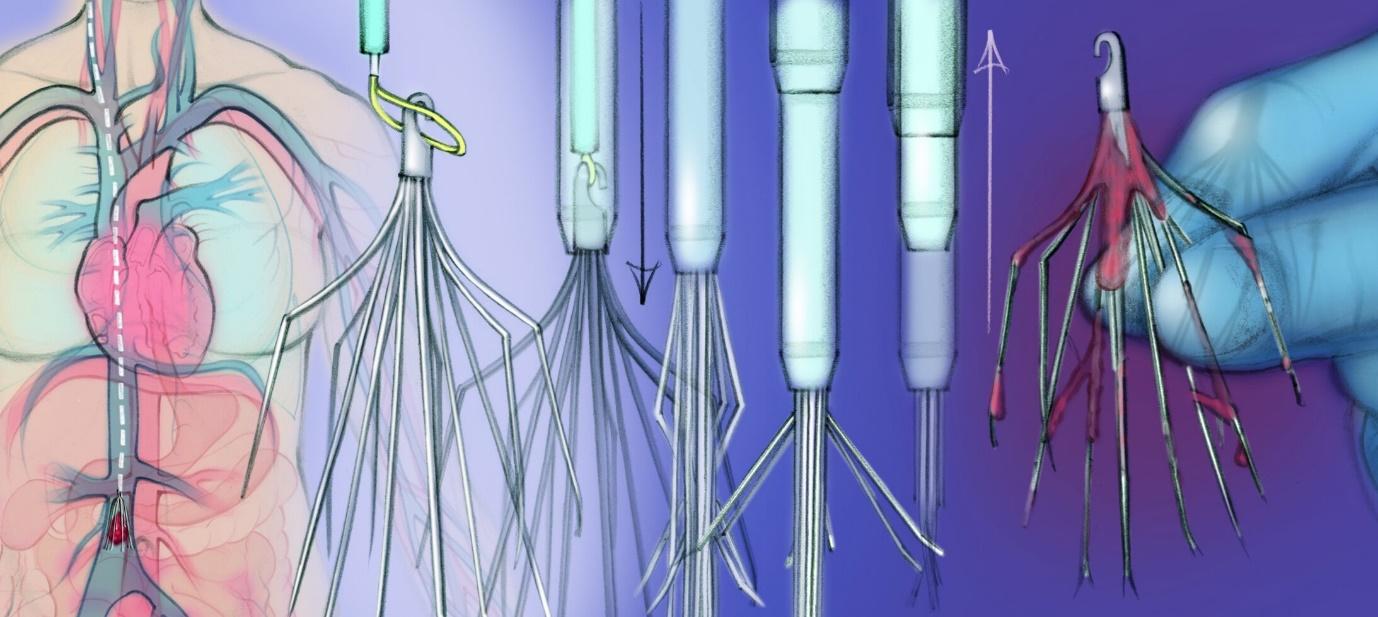If the inferior vena cava (IVC), the largest blood vessel that carries oxidized blood to the right atrium of the heart, is blocked, it will cause swollen legs. Hence, it is necessary to implant an IVC filter to improve blood circulation. Unfortunately, some medical manufacturers have experienced IVC Filter litigation due to their products.
Installation of an IVC filter has proven to be effective in saving the lives of many patients but is also not without risks. Please read this material completely so you can take appropriate action if you encounter a problematic IVC filter installation.
What is an IVC Filter?
An IVC filter is a small, spiderweb-like device implanted in a blocked vein. Implanting this medical device can improve blood circulation to the heart. This filter design, which resembles a spider web, aims to catch blood clots so they don’t get into the lungs.
Since this medical device can capture blood clots, its design was adjusted to reduce the risk of blood clots. The doctor will recommend implanting an IVC filter in patients who cannot take blood thinning medication and are at risk of developing DTV (Deep Vein Thrombosis).
Over time, IVC filters implanted in a patient’s blood vessels increase the risk of adverse health effects. This condition can trigger patients to file IVC filter litigation.
A Glimpse into the IVC Filter’s Problem History
According to information from Forbes, in 2010 the FDA (The U.S. Food and Drug Administration) issued an IVC filter warning which was continuously updated until 2014. The FDA has continued to update the warning since receiving hundreds of adverse reports.
Besides, the FDA also followed up on the adverse report by informing patients and healthcare providers about the risks of IVC filters. This information also includes potential complications that may occur as a result of an IVC filter being implanted for a long period of time.
The highlights of the concerns include:
- vena cava perforation;
- fracturing and device migration;
- difficulty removing IVC filters.
Similarly, the FDA warns that IVC filter removal also increases the risk of DVT and other health adverse.
Timeline Recap of IVC Filter Cases
Bard was the first medical device manufacturer to face an IVC filter lawsuit in 2012. Subsequently, similar cases faced by Cook Medical and other manufacturers followed. To get a vivid understanding, please see the following recap of IVC filter litigation highlights.
| Year of Litigation | Manufacture And The Reason |
| 2005 | FDA recalled IVC filters from Boston Scientific manufacturer. |
| 2010 | After obtaining the adverse event findings, the FDA issued an IVC filter communication. |
| 2012 | The first class-action lawsuit was filed by the plaintiffs against manufacturers C.R. Bard and Cook Medical. |
| 2014 | Consolidation of Cook cases into a multi-district lawsuit (MDL). |
| 2014 | Updated communication from the FDA providing advice on immediately removing the IVC filter if it is no longer needed. |
| 2013-2015 | Manufacturer Brand resolved various cases with patients experiencing IVC filter migration, causing lung and heart injury. |
| 2015 | News reported that Brad’s IVC device caused severe health complications and 27 patients died. |
| 2018 | In the first lead trial, Brad was ordered to pay $3.6 million to the plaintiff. |
| 2019-2023 | The trial ordered Brad and Cook manufacturers to pay punitive damages. |
| June and July 2023 | Cook Medical continues to receive IVC filter litigation from plaintiffs. Brad still has one MDL case open. |
| November 2023 | Brad has no active cases remaining. Meanwhile, around 8,000 lawsuits are pending against Cook Medical. |
| December 2023 | Scheduling of a bellwether trial Scott v. Cook Medical on December 4, 2023. |
5 Phases of Filing an IVC Filter Lawsuit
If you or your family members face problems after implanting an IVC filter, follow the following phases to file a legal claim.
1. File a Civil Lawsuit in Court
First of all, the plaintiff or injured person must file a lawsuit in civil court. The complaint you submit will become a document to initiate a lawsuit. The contents of the lawsuit include complaints against the medical professional who implanted the filter and the manufacturer who produced the IVC filter (Cook Medical or Brad).
2. Submission of Defendants’ Responses
After obtaining the IVC filter litigation from the plaintiff, the defendant can submit an answer to the lawsuit filed against him. Both judges, juries, prosecutors, and lawyers will study the answers to the complaint.
3. Process of Finding Common Ground on Problems
The next phase is to find common ground on the problem by exchanging information between the plaintiff and the defendant. Information comes from written questions including medical records and other evidence, document requests, and sworn testimony (deposition).
4. Motion in Limine
At this stage, the plaintiff and defendant will argue combatively which is commonly known as a motion in limine. The debate is to persuade the judge to reject or allow certain evidence in the trial. For instance, allow or reject testimony from expert witnesses.
5. Trial
The trial will allow the plaintiff and defendant to present their arguments and evidence. Along with that, the judge will listen carefully so he can make a decision on whether it is proven that the defendant must provide compensation to the plaintiff.
The plaintiff will receive compensation if the IVC filter produced by the defendant is proven to cause health problems due to complications from the IVC filter implant.
When Should You File an IVC Filter Litigation?
Since IVC filter implants pose major risks and side effects to the patient, you need to be more careful. You can file a lawsuit if you face health problems that continue to get worse after an IVC filter implant. However, when should you file a lawsuit? You can immediately take legal action if you experience complaints like the ones below:
- inability to permanently remove the device;
- fractured and punctured veins;
- periphrasis and organ damage;
- multiple removal procedures.
Is IVC Filter Litigation Post Worthwhile?
On a final note, patients who continue to experience worsening health conditions after IVC filter implantation can take the initiative to file IVC filter litigation to obtain compensation. However, first, carry out a medical examination to see whether the worsening health condition is indeed due to complications from filter implants.
Correspondingly, you also need to collect information on medical professionals who implant IVC filters and the companies that produce them. Generally, IVC filter lawsuits are addressed to companies that manufacture problematic filters.
Bagikan









